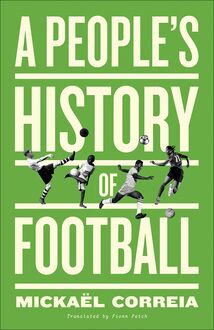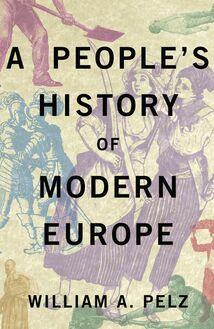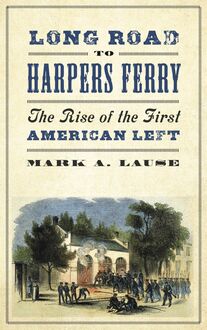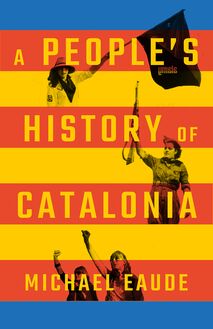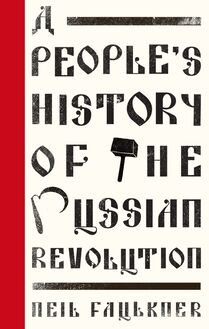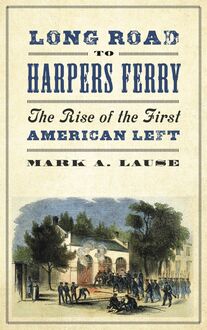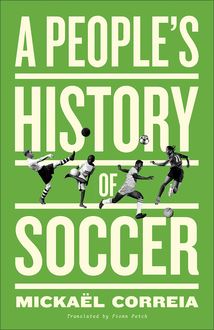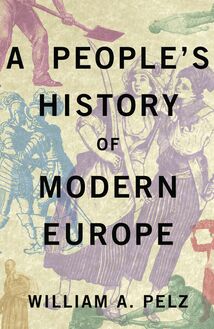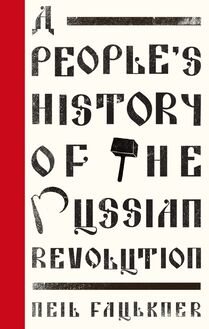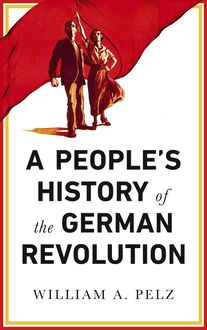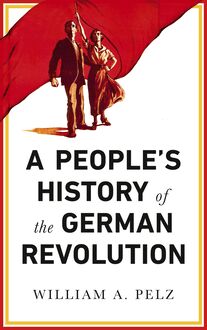-
 Univers
Univers
-
 Ebooks
Ebooks
-
 Livres audio
Livres audio
-
 Presse
Presse
-
 Podcasts
Podcasts
-
 BD
BD
-
 Documents
Documents
-
- Cours
- Révisions
- Ressources pédagogiques
- Sciences de l’éducation
- Manuels scolaires
- Langues
- Travaux de classe
- Annales de BEP
- Etudes supérieures
- Maternelle et primaire
- Fiches de lecture
- Orientation scolaire
- Méthodologie
- Corrigés de devoir
- Annales d’examens et concours
- Annales du bac
- Annales du brevet
- Rapports de stage
La lecture à portée de main
Vous pourrez modifier la taille du texte de cet ouvrage
Découvre YouScribe en t'inscrivant gratuitement
Je m'inscrisDécouvre YouScribe en t'inscrivant gratuitement
Je m'inscrisEn savoir plus
Vous pourrez modifier la taille du texte de cet ouvrage
En savoir plus

Description
This book contains new and fascinating insights into the cast of characters who created a homegrown American socialist movement through the nineteenth century - from Thomas Paine's revolution to Robert Owen's utopianism, from James Macune Smith, the black founder of organised socialism in the US, to Susan B. Anthony, the often overlooked women’s rights activist. It also considers the persistent pre-capitalist model of the Native American.
Long Road to Harpers Ferry captures the spirit of the times, showing how class solidarity and consciousness became more important to a generation of workers than notions of American citizenship. This is a story that's been hidden from official histories, which must be remembered if we are to harness the latent power of socialism in the United States today.
Introduction
Part I: Working Citizens: From Ideas to Organization
1. Liberty: Eighteenth-Century Transatlantic Legacies and Challenges
2. Equality: The Mandates of Community and the Necessity of Expropriation
3. Solidarity: Coalescing a Mass Resistance
Part II: Working Citizens Towards a Working Class: From Organization to a Movement
4. The Movement Party: Beyond the Failures of Civic Ritual
5. Confronting Race and Empire: Slavery and Mexico
6. Free Soil: The Electoral Distillation of Radicalism, 1847-1848
Part III: An Unrelenting Radicalism: From Movement to Cadres
7. Free Soil Radicalized: The Rise and Course of the Free Democrats 1849-1853
8. The Pre-Revolutionary Tinderbox: Universal Democratic Republicans, Free Democrats and Radical Abolitionists 1853-1856
9. The Spark: Small Initiatives and Mass Upheavals 1856-1860
Epilogue: Survival and Persistence: The Lineages and Legacies of the Early American Movement
Notes
Index
Sujets
Radicalism
Political Ideologies
Economic History
HISTORY
POLITICAL SCIENCE
Histoire
Revolutions
USA
United States of America
América del Norte
Communism
Revolutionary
George Henry Evans
Native Americans
Equality
Liberty Party
Democratic Party
Free Soil Party
Organization
Ethnic group
Chartism
Military
South
History of the United States
Abolitionism
Slavery
Revolution
Politics
North America
History of the Americas
African American
American Revolution
Agrarianism
Central
Parti du sol libre
Liberty
États-Unis
Communisme
John Brown
Robert Owen
Thomas Paine
Charles Fourier
Race
Informations
| Publié par | Pluto Press |
| Date de parution | 20 septembre 2018 |
| Nombre de lectures | 0 |
| EAN13 | 9781786803252 |
| Langue | English |
Informations légales : prix de location à la page 0,0005€. Cette information est donnée uniquement à titre indicatif conformément à la législation en vigueur.
Extrait
Long Road to Harpers Ferry
People s History
History tends to be viewed from the perspective of the rich and powerful, where the actions of small numbers are seen to dictate the course of world affairs. But this perspective conceals the role of ordinary women and men, as individuals or as parts of collective organisations, in shaping the course of history. The People s History series puts ordinary people and mass movements centre stage and looks at the great moments of the past from the bottom up.
The People s History series was founded and edited by William A. Pelz (1951-2017).
Also available:
A People s History of the German Revolution 1918-19 William A. Pelz Foreword by Mario Kessler
A People s History of the Portuguese Revolution Raquel Varela
Long Road to Harpers Ferry
The Rise of the First American Left
Mark A. Lause
First published 2018 by Pluto Press
345 Archway Road, London N6 5AA
www.plutobooks.com
Copyright Mark A. Lause 2018
The right of Mark A. Lause to be identified as the author of this work has been asserted by him in accordance with the Copyright, Designs and Patents Act 1988.
British Library Cataloguing in Publication Data A catalogue record for this book is available from the British Library
ISBN 978 0 7453 3760 9 Hardback
ISBN 978 0 7453 3759 3 Paperback
ISBN 978 1 7868 0324 5 PDF eBook
ISBN 978 1 7868 0326 9 Kindle eBook
ISBN 978 1 7868 0325 2 EPUB eBook
This book is printed on paper suitable for recycling and made from fully managed and sustained forest sources. Logging, pulping and manufacturing processes are expected to conform to the environmental standards of the country of origin.
Typeset by Stanford DTP Services, Northampton, England
Simultaneously printed in the United Kingdom and United States of America
Contents
Introduction
PART ONE WORKING CITIZENS: FROM IDEAS TO ORGANIZATION
1. Liberty: Eighteenth-Century Transatlantic Legacies and Challenges
2. Equality: The Mandates of Community and the Necessity of Expropriation
3. Solidarity: Coalescing a Mass Resistance
PART TWO WORKING CITIZENS TOWARDS A WORKING CLASS: FROM ORGANIZATION TO A MOVEMENT
4. The Movement Party: Beyond the Failures of Civic Ritual
5. Confronting Race and Empire: Slavery and Mexico
6. Free Soil: The Electoral Distillation of Radicalism, 1847-8
PART THREE AN UNRELENTING RADICALISM: FROM MOVEMENT TO CADRES
7. Free Soil Radicalized: The Rise and Course of the Free Democrats, 1849-53
8. The Pre-Revolutionary Tinderbox: Universal Democratic Republicans, Free Democrats and Radical Abolitionists, 1853-6
9. The Spark: Small Initiatives and Mass Upheavals, 1856-60
EPILOGUE
Survival and Persistence: The Lineages and Legacies of the Early American Movement
Notes
Index
Introduction
The once prominent African American physician James McCune Smith took up the nom de plume of Communipaw from one of the earliest Dutch settlements in Jersey City. Some of the first Europeans in the area of New Amsterdam camped alongside the Hackensack Indians on a peninsula extending into the Hudson River. There, near what became South Cove, Smith envisioned Africans living and laboring alongside native peoples and whites. By the early nineteenth century, the market demands of capital overwhelmed those of the people, and Jersey City had long since obliterated the old settlement. 1 The complex origins of an anticapitalist American Left were inseparably related to a vision beyond that of the white republic to the possibilities of a civilization that could value liberty, equality and the willingness of different races to cohabit a place such as Communipaw.
This is a concise history of those origins. Such a work has been needed since I began looking for one half a century ago. The economic collapse of 2008 and the political management of massive bailouts and corporate subsidies created numerous radical critiques of capitalism, particularly among the young. So the time seemed ripe to bring this project to term.
* * *
Historically, conditions predisposed these works to become rather stinted institutional histories of radical organizations. Some of the earlier efforts were predisposed to become the annals of a Teutonic fraternity clinging to its explicit mathematical appreciation of surplus value, with little attention to the world moving around it. Not without reason have such preoccupations failed to generate a more powerful and widespread challenge to American capitalism.
This work has a more amorphously movement focus. When real rather than aspirational, movements are innately fluid and move in differentiated layers based on pace and viscosity. While a movement may have different-even contradictory-effects, several factors distinguish the core of a movement from the periphery, the most important to me in this work being its dynamic.
Such an approach, of necessity, reflects the fundamental complexities of American civilization and its hierarchies. That civilization, as it now exists, grew from clearly racialized foundations. Shortly after three million residents of Anglo-America attained independence, about 600,000 native peoples lived within the claimed borders, and this fell to less than 340,000 by 1860. Its foundations are no less independent of an African Holocaust that seized an estimated 18 to 20 million Africans from their homes from the sixteenth through the nineteenth centuries, of which half a million labored in Revolutionary America, growing by 1860 to nearly four million, the vast majority of which lived as slaves. These harsh realities framed an American understanding of liberty, equality and inclusiveness.
Scholars have reasonably extended Caribbean models to underscore the legal determination of whiteness. However comparable, conditions on the North American mainland differed significantly from that in the plantations of the Caribbean, where the relatively small population of self-defined whites had to cooperate in the subjugation of a massive black majority. The Black Codes from colonial times to the color bars of the nineteenth century represented legal strictures formulated by the rulers and imposed on the entire society.
Then, too, everywhere in the New World experienced maroons. Some native peoples occupied the least exploitable niches, and large numbers of runaway slaves of both sexes joined them in the swamps, mountains, and other isolated areas. They built homes, raised crops and livestock, organized their defenses, and, provided a place to which others might flee. American slaveholding societies, by their existence, created these maroons. 2 Participants included white renegades, intellectually and culturally defined.
These inspired a series of challengers. These included Christian Gottlieb Priber, as well as black leaders such as Cudjoe, Lewis, and General of the Swamp, who headed their maroon towns in Georgia and North Carolina. For James M. Smith, for example, Communipaw represented a maroon internalized.
One of the most prominent of the antebellum labor radicals borrowed the comprehensive phrase of a black writer to describe the exclusions of the society that developed. It had been a white king and his authorities who stole the black man from his land, took land from the red men, and apportioned the stolen bodies and the stolen land among a few of his own color, to whom he made the remainder of the whites as dependent for the means of existence as were the blacks themselves. 3
The inequalities Euroamerican society imposed upon outsiders reflected the inequalities imposed within. Men remained more likely to immigrate to America and, more so, to head to the frontier, but women constituted nearly half of the two million white residents of the colonies. Almost all women in America remained essentially civic nonentities and, in some cases, little more than domestic slaves. While patriarchal relationships within the family pre-dated capitalism, power turned increasingly on property ownership, custom and law further marginalized half the human race.
More than this, capitalism required the vast majority of the entire people to labor. Conditions on the frontier or in areas characterized by subsistence family farming-especially mountainous districts not conducive to large scale farming-required few hired workers, but the large well-settled commercial farming regions that produced grains in the North or tobacco in the South required a work force beyond the family. The roots of a recognizably modern working class took form in the twenty pre-Revolutionary towns with a population over three thousand and, especially, in the five over ten thousand-Philadelphia, New York, Boston, Newport and Charleston. Such communities needed carpenters, bricklayers and masons for construction or shoemakers, tailors, hatters and others for things to wear. Beyond such artisan crafts, the docks, warehouses, and ships required maritime labor and large numbers of the unskilled as well. Workers and their households accounted for a bit over half the population of the smaller cities and as many as three-quarters of the big cities.
Such mercantile centers became the points of friction between the British Empire and the colonial merchant elite which relied heavily upon the numbers and coherence of working people in the streets. Too, immigrants disproportionately clustered in the large port cities, which mingled numerous Scots and Welsh newcomers and a growing portion tending to be Irish, even as Germans constituted about a third of Pennsylvania. Not surprisingly, many had no great love for the empire, though they found themselves subject to its maritime or military service, the taxes, and the cost of taxes imposed on merchants and employers passing on their cost. Households, of course, carried this load, including many women struggling to support themselves and their children on their own. So, too, the market women prominent in preindustrial bread riots and similar disorders reappeared
-
 Univers
Univers
-
 Ebooks
Ebooks
-
 Livres audio
Livres audio
-
 Presse
Presse
-
 Podcasts
Podcasts
-
 BD
BD
-
 Documents
Documents
-
Jeunesse
-
Littérature
-
Ressources professionnelles
-
Santé et bien-être
-
Savoirs
-
Education
-
Loisirs et hobbies
-
Art, musique et cinéma
-
Actualité et débat de société
-
Jeunesse
-
Littérature
-
Ressources professionnelles
-
Santé et bien-être
-
Savoirs
-
Education
-
Loisirs et hobbies
-
Art, musique et cinéma
-
Actualité et débat de société
-
Actualités
-
Lifestyle
-
Presse jeunesse
-
Presse professionnelle
-
Pratique
-
Presse sportive
-
Presse internationale
-
Culture & Médias
-
Action et Aventures
-
Science-fiction et Fantasy
-
Société
-
Jeunesse
-
Littérature
-
Ressources professionnelles
-
Santé et bien-être
-
Savoirs
-
Education
-
Loisirs et hobbies
-
Art, musique et cinéma
-
Actualité et débat de société
- Cours
- Révisions
- Ressources pédagogiques
- Sciences de l’éducation
- Manuels scolaires
- Langues
- Travaux de classe
- Annales de BEP
- Etudes supérieures
- Maternelle et primaire
- Fiches de lecture
- Orientation scolaire
- Méthodologie
- Corrigés de devoir
- Annales d’examens et concours
- Annales du bac
- Annales du brevet
- Rapports de stage
